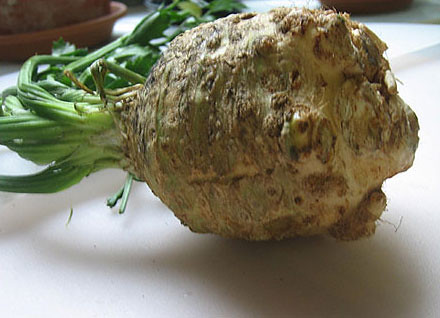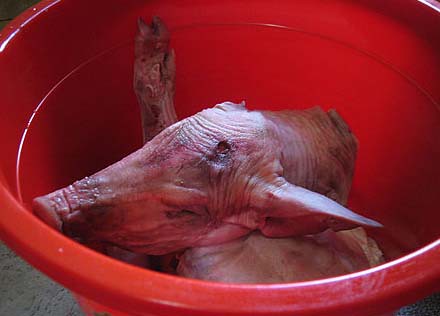During a recent visit to the farmers’ market, there was an abundant choice of root vegetables. I had this conversation with Cameron before where we had to draw on the office whiteboard what we thought were radishes and turnips. Filipino radishes are long and thick like white carrots, while American ones are the size of pink golf balls. Filipino turnips are bulb-looking things with a tough light brown peel, while the American version sometimes has a pink shade to it. Then there are the parsnips that don’t even exist in Filipino vocabulary but look more like our radishes. Cameron now thinks Filipinos are just weird. It gets all convoluted. I’m sure the terminology is interchangable, but a trip to the farmers’ market sure was a nice lesson.
These were called radishes even though they were the size of small thumbs–the shape is Filipino, the color American. They definitely tasted more like the American radishes with that sharp bite at the end. A jig of really good balsamic vinegar can balance out that kick. Chop them in small pieces and they make a good substitute for pretzels when you’re drinking beer.
These were called Japanese turnips, with a smooth peel, and sweet, fleshy meat inside. I liked eating these raw and they matched well with some spicy arugula.
And then I got these two things because I couldn’t stop myself from smelling them. I find it curious when people tell me they hate cilantro in their food, but then don’t mind ordering an Indian dish sprinkled with coriander seeds. Not too many people know they’re the same; I just know the cookbooks I’ve purchased in Europe always refer to them as coriander, while American markets always use cilantro on labels. The leaves of the bunch I bought looked like frisée. They’re called delfino, a more aromatic cilantro version.







